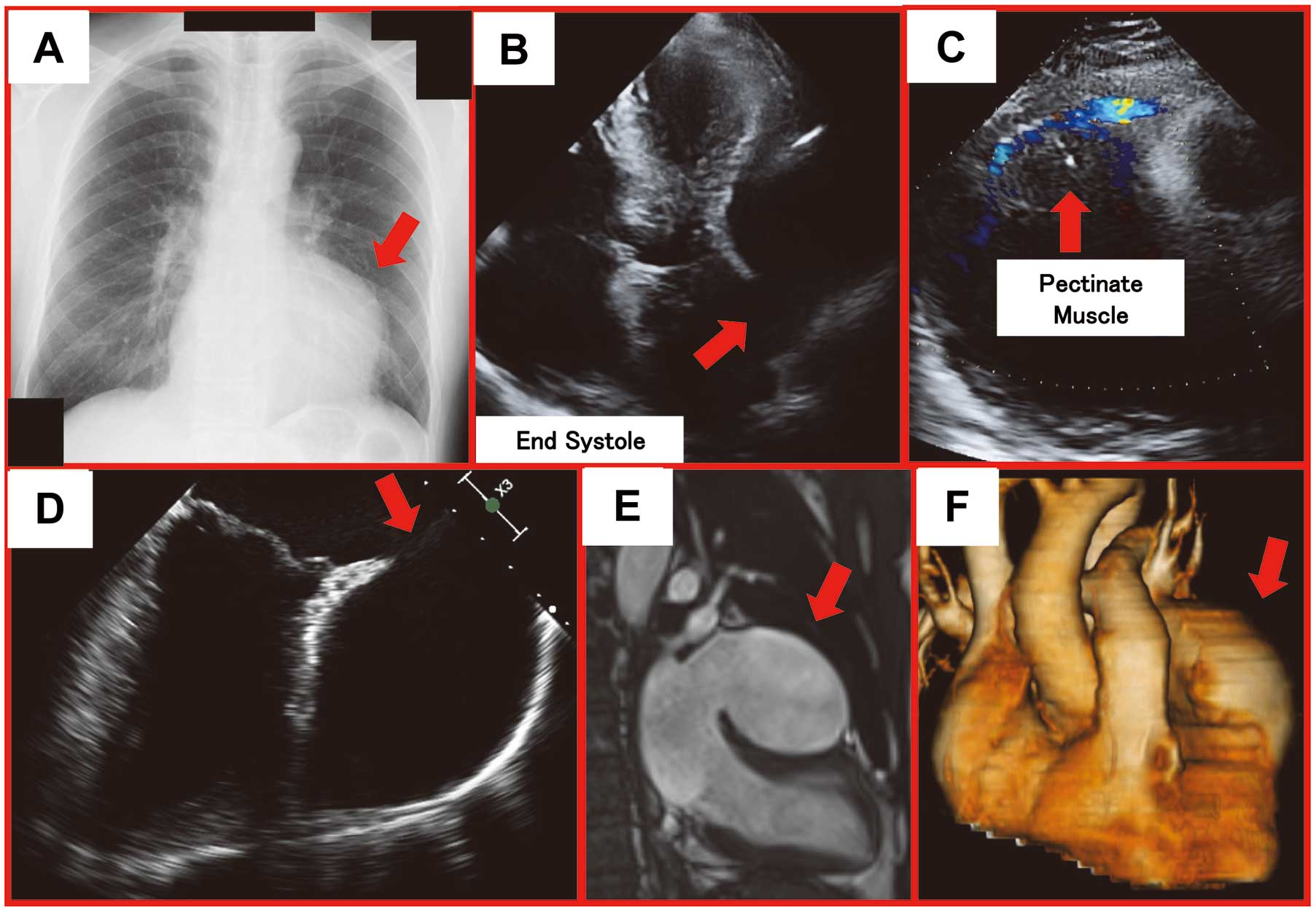2022 Volume 86 Issue 7 Pages 1147-
2022 Volume 86 Issue 7 Pages 1147-
A 38-year-old male presented with palpitation and dyspnea on exertion. Chest X-ray showed cardiomegaly in the position of left atrium (LA; Figure A). An electrocardiogram (ECG) revealed atrial fibrillation. Transthoracic echocardiography (TTE) showed a huge aneurysm being continuous with the LA, with pectinate muscles found in it (Figure B,C); thus, we diagnosed left atrial appendage aneurysm (LAAA). Transesophageal echocardiography (TEE) and cardiac magnetic resonance imaging showed LAAA more accurately (Figure D–F). There was no thrombus in the aneurysm. Aneurysmectomy was performed to prevent thromboembolic events. The left ventricle was deformed, compressed by the aneurysm. The wall of the aneurysm was thin, and pectinate muscles could be seen from the outside. The LAAA was clipped and then resected, and a maze procedure was performed. Histopathology demonstrated myocardial hypertrophy, hyperplasia of elastic fibers, and fatty infiltration. It was considered that the patient’s symptoms were caused by atrial fibrillation and deformation of the left ventricle.

(A) Chest X-ray. (B,C) Transthoracic echocardiography. (D) Transesophageal echocardiography. (E,F) Cardiac magnetic resonance imaging.
LAAA is rare morphological abnormality characterized by dilation of the left atrial appendage. Aneurysms increase in size as patients age, and symptoms appear as the aneurysms expand. The most common symptom is palpitation, followed by exertional dyspnea.1 In half of cases, atrial tachycardia is seen on ECG. Although chest X-ray almost shows cardiomegaly in the position of the LA, it may be interpreted as another condition, such as pericardial cyst.1 Only 24% of cases can be diagnosed with TTE alone, with diagnostic accuracy improving if TEE and cardiac MRI are also performed.1 Patients with LAAA are high risk of thromboembolic events, so aneurysmectomy is recommended even if the patient is asymptomatic.2 A comprehensive scan using TTE plays a key role in the diagnosis of LAAA.
None.
This study was approved by the Wakayama Medical University Certified Review Board (CRB5180004).